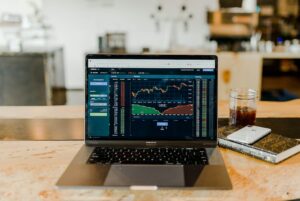The foreign exchange market, commonly known as forex, is the largest and most liquid financial market in the world. With a daily trading volume of over $6 trillion, it offers numerous opportunities for traders to profit from fluctuations in currency exchange rates. However, forex trading is not a one-size-fits-all activity. There are different types of forex trading strategies that traders can employ to achieve their financial goals. In this article, we will explore the various types of forex trading and provide a comprehensive definition guide.
1. Spot Forex Trading:
Spot forex trading is the most common and straightforward form of forex trading. It involves the buying and selling of currencies in real-time at the current market price, known as the spot price. Traders aim to profit from the fluctuations in currency exchange rates by taking advantage of price movements. Spot forex trading offers high liquidity and allows traders to execute trades instantly.
2. Forward Forex Trading:
Unlike spot forex trading, forward forex trading involves the buying or selling of currencies at a predetermined future date and price. It is a type of forex trading that is commonly used by corporations and institutional investors to hedge against currency risk. Forward contracts are customized agreements between two parties to exchange a specific amount of currency at a future date. This type of forex trading allows businesses to lock in exchange rates to protect against potential losses due to currency fluctuations.
3. Futures Forex Trading:
Futures forex trading involves trading standardized contracts known as futures contracts. These contracts specify the amount of a particular currency to be bought or sold at a predetermined future date and price. Futures contracts are traded on regulated exchanges, such as the Chicago Mercantile Exchange (CME), and are subject to margin requirements. Futures forex trading allows traders to speculate on the future direction of currency exchange rates and profit from price movements.
4. Options Forex Trading:
Options forex trading is a derivative trading strategy that gives traders the right, but not the obligation, to buy or sell a currency pair at a predetermined price within a specific period. Unlike futures contracts, options contracts provide flexibility as traders have the choice to exercise the option or let it expire. Options forex trading allows traders to profit from both rising and falling currency exchange rates while limiting their potential losses to the premium paid for the option.
5. Day Trading:
Day trading is a short-term forex trading strategy where traders open and close positions within the same trading day. Day traders aim to profit from small price movements by frequently entering and exiting trades. This type of forex trading requires active monitoring of the market and quick decision-making. Day trading can be highly profitable but also comes with higher risks due to increased trading frequency and potential for emotional trading.
6. Swing Trading:
Swing trading is a medium-term forex trading strategy where traders aim to capture larger price movements over several days or weeks. Swing traders typically hold their positions for a longer period compared to day traders. This type of forex trading requires technical analysis to identify potential trend reversals or retracements. Swing trading allows traders to take advantage of both short-term and long-term market trends.
7. Position Trading:
Position trading is a long-term forex trading strategy where traders hold positions for weeks, months, or even years. Position traders aim to profit from significant price movements driven by fundamental factors, such as economic indicators, central bank policies, or geopolitical events. This type of forex trading requires patience and a thorough understanding of macroeconomic factors affecting currency exchange rates.
In conclusion, forex trading offers a variety of strategies for traders to choose from, depending on their trading style, risk tolerance, and financial goals. Whether you prefer short-term day trading, medium-term swing trading, or long-term position trading, it is essential to develop a solid understanding of each type of forex trading and choose the one that best suits your individual needs. By doing so, you can increase your chances of success in the dynamic and ever-evolving world of forex trading.






